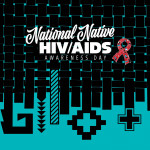Sunday, May 19, marks National Asian & Pacific Islander HIV/AIDS Awareness Day 2024; it’s referred to as both #APIMay19 and #NAPIHAAD. Search the hashtags on social media to find promotional and educational content like the samples posted below.
First launched in 2005, the day aims to educate about the impact of HIV and related stigma in Asian, Pacific Islander and Native Hawaiian communities, often referred to as Asian Pacific Islander (API) communities.
May 19 is National Asian & Pacific Islander HIV/AIDS Awareness Day. Did you know only 22% of Asian Americans in the U.S. have tested for #HIV? Let’s address disparities in testing and prevention. #NAPIHAAD Learn more: https://t.co/c6o0PdyXtb pic.twitter.com/DF578rkOob
— Pacific AIDS Education & Training Center (@Pacific_AETC) May 17, 2024
View this post on Instagram
In 2021, these communities accounted for 2.3% of new HIV diagnoses in the United States. Specifically, this means 814 cases, mostly among Asian men. AIDSVu.org, which creates interactive maps and graphics based on HIV data, offers more nuanced figures and a 2024 NAPIHAAD tool kit:
In 2021, HIV prevalence among Asian people was the highest in the Western regions of the United States, and the two states with the highest Asian HIV prevalence were California and New York. In addition,
- Between 2017 and 2021, HIV diagnoses in the Asian community decreased by 19%, while HIV diagnoses in the Native Hawaiian and Pacific Islander community increased by 65%.
- 89% of Asian people living with HIV in 2021 knew their status, while 81% of Native Hawaiian and Pacific Islanders living with HIV knew their status.
- Asian people had the lowest testing rates among all races/ethnicities in 2021. Only 22% of Asian people in the United States had tested for HIV at least once in their lifetime, compared with 35% of Native Hawaiians and Pacific Islanders and 35% nationally.
- In 2021, 70% of Asian people diagnosed with HIV were virally suppressed; 63% of Native Hawaiians and Pacific Islanders diagnosed with HIV were virally suppressed.
Many barriers lead to negative HIV-related outcomes for Asian, Native Hawaiian and Pacific Islander Americans. According to the 2021 American Community Survey (5-Year Data), 10.3% of Asians and 16.7% of Native Hawaiians/Pacific Islanders live below the federal poverty level, and 6.3% of Asians and 11.2% of Native Hawaiians/Pacific Islanders don’t have health coverage. These social determinants of health can make it more difficult to access HIV prevention, testing and care resources.
May 19 is National Asian and Pacific Islander HIV/AIDS Awareness Day. #StopHIVStigma in Asian and Pacific Islander communities and start talking about HIV testing, prevention, and treatment.
— Hawaiʻi State Department of Health (@HawaiiDOH) May 17, 2024
Visit https://t.co/30tkwPc28e for more information!#NAPIHAAD pic.twitter.com/ug6cCmduDh
In addition to a tool kit and sharable graphics, AIDSVu also posted an interview with Eric C. Wat, the author of Love Your Asian Body: AIDS Activism in Los Angeles.
“The Asian American community is very complex,” Wat told AIDSVu. “Every community is complex, but I think our community is uniquely complex in the way it’s highly influenced by the number of different ethnic groups with very different cultures and experiences within the United States’ history of immigration. We have these ethnic enclaves that could be their own thing.
“I feel like we have kind of fallen off as a risk group when it comes to HIV prevention because of the low numbers of documented transmission. I felt that, even though there was a lot of campaigning in the ’90s around it, there wasn’t much outreach effort or public funding for that type of outreach effort. The lack of resources may also explain why HIV doesn’t register as an issue for a lot of immigrants. But immigrants were—and are–very hard to reach. I call it the ‘holy grail of outreach.’ It’s very clear that any public message around public education and HIV/AIDS that is put out by mainstream, the government or mainstream AIDS agencies is not going to carry over to the immigrant community. So we have to do our own work.”
We’re one week away from National Asian & Pacific Islander HIV/AIDS Awareness Day! Get your #NAPIHAAD resources at https://brnw.ch/21wJIXG
Posted by HIV.gov on Monday, May 13, 2024
To learn more about other HIV awareness days, including a calendar you can download and print, visit “2024 HIV/AIDS Awareness Days.”







Comments
Comments